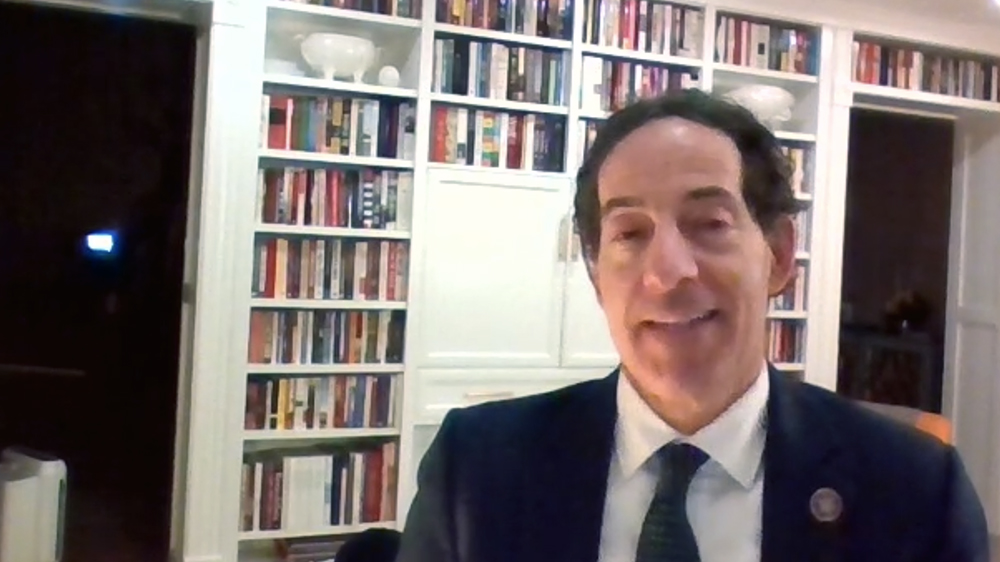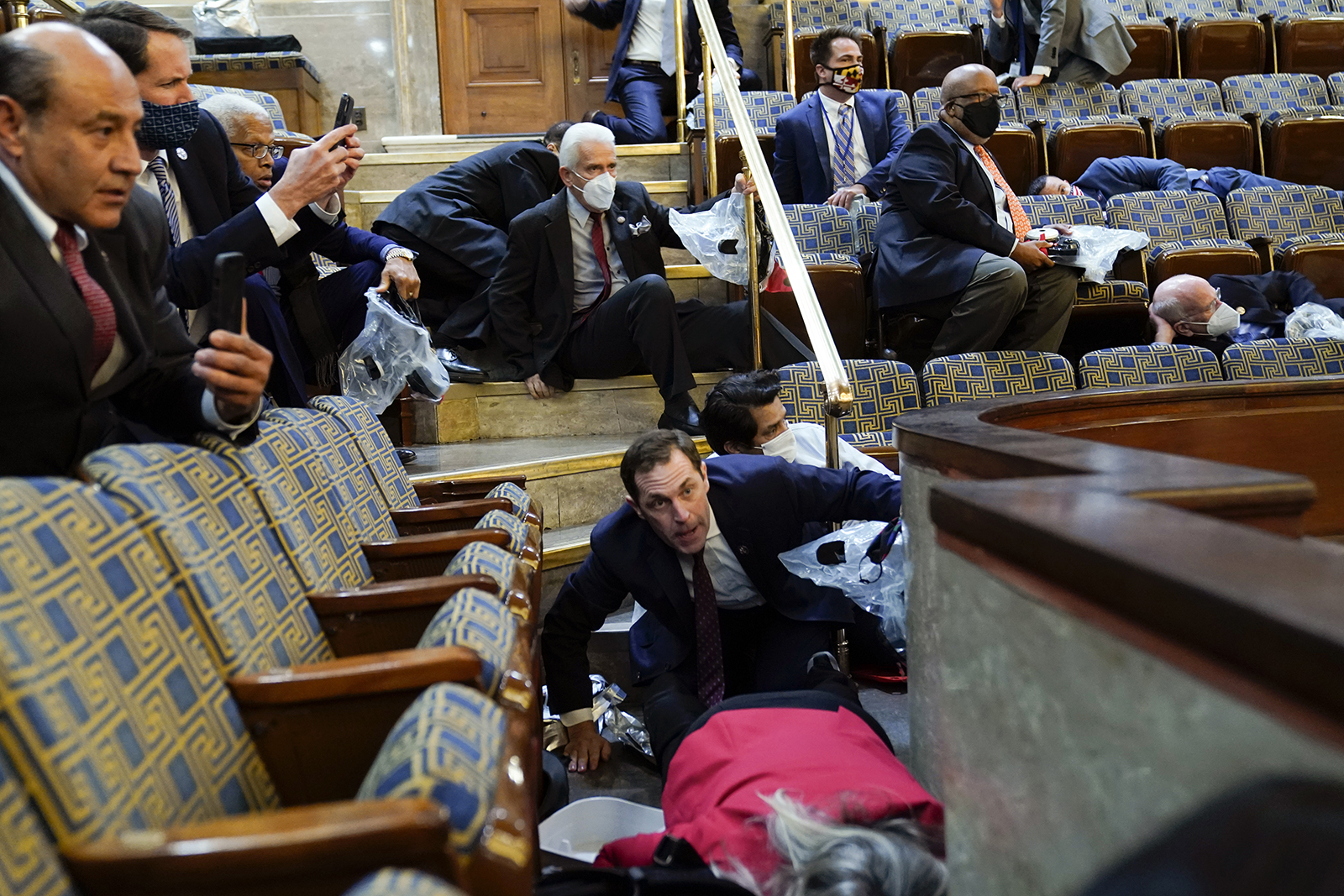WASHINGTON (RNS) — Members of the Congressional Freethought Caucus met with a group of scholars and activists on Thursday evening (March 17) to review a new report detailing the role Christian nationalism played in the insurrection that took place at the U.S. Capitol on Jan. 6, 2021.
The meeting was a rare instance of lawmakers openly addressing the prominence of religious expression during the attack, which was evident on Jan. 6 but has not been a central focus of public discussions on Capitol Hill.
California Democratic Rep. Jared Huffman, who said he first discussed the role of Christian nationalism and the insurrection with some of the panelists last summer, hosted the meeting for a slate of lawmakers that included Maryland Rep. Jamie Raskin, a co-founder of the Freethought Caucus who also serves on the House Select Committee investigating the attack.
Raskin opened the virtual briefing by noting that while a variety of ideologies were represented among insurrectionists, Christian nationalism “clearly figured highly in the events of the day,” and was “a unifying theme for many of the factions that assembled on January 6.”

Maryland Rep. Jamie Raskin on Thursday, March 17, 2022. Video screen grab
His words were echoed by an array of panelists who presented findings from a recent report they helped author with backing from the Freedom from Religion Foundation and the Baptist Joint Committee for Religious Liberty. Among other things, the 66-page study documents in painstaking detail the prevalence of Christian nationalist symbols and rhetoric at the insurrection and a series of events that led up to the storming of the Capitol.
Amanda Tyler, head of the BJC, told lawmakers the report faced “defensive pushback” from some conservative Christians after it was unveiled last month but has been embraced by Christians who see opposing Christian nationalism as a religious call.
“Let’s be clear: Christianity does not and cannot unite Americans under a national identity,” Tyler said, adding that Christian nationalism “debases Christianity.”
Samuel Perry, a University of Oklahoma sociologist and co-author of “Taking America Back for God: Christian Nationalism in the United States,” told lawmakers he and others who study the ideology often use the more specific term “white Christian nationalism,” because data indicates Christian nationalist sentiments appear to “perform differently when white Americans affirm them as opposed to non-white Americans.”
He was followed by Jemar Tisby, a historian and head of Black Christian collective The Witness, who contrasted white Christian nationalism with fusions of faith and activism among Black Christians.
“In contrast to white Christian nationalism, Black Christians have historically tended to embrace a kind of patriotism that leads to an expansion of democratic processes, the inclusion of marginalized people and a call for the nation to live up to its foundational ideas,” he said.
Andrew L. Seidel of the Freedom from Religion Foundation, a chief author of the report, closed out the briefing presentations by outlining the way Christian nationalism operated as a “permission structure” for activists, arguing it gave them “the moral and mental license they needed” to participate in events such as the Million MAGA March and the Jericho Marches in the months prior to the insurrection, as well as to attack the Capitol.
“(There were) other motivations and drivers of this attack, but this Christian nationalist permission structure — doing God’s will, fighting for God’s law, returning the country to its Christian roots — pervaded a lot of those other obvious drivers of this attack.”

People shelter in the House gallery as protesters try to break into the House chamber at the U.S. Capitol on Jan. 6, 2021, in Washington. (AP Photo/Andrew Harnik)
Lawmakers appeared largely convinced by the report, peppering the panelists with questions over the course of the hour-long briefing.

